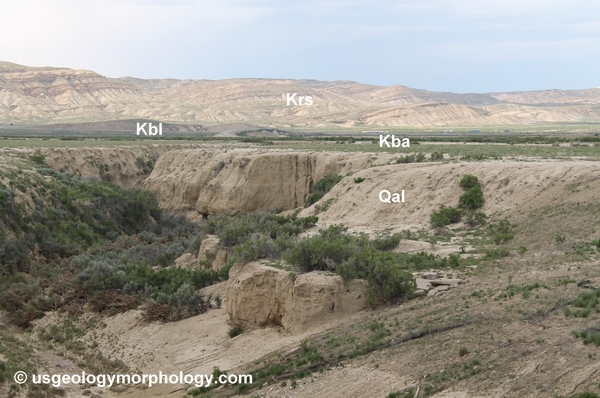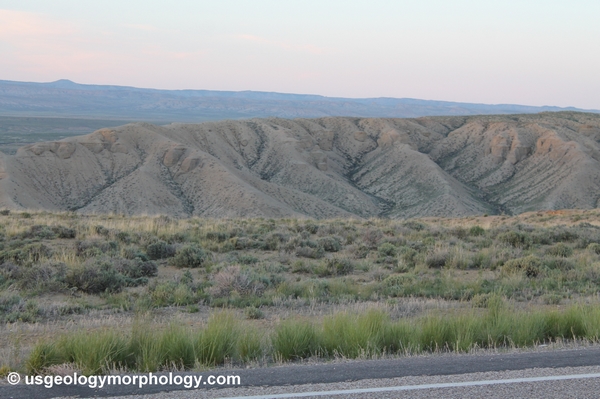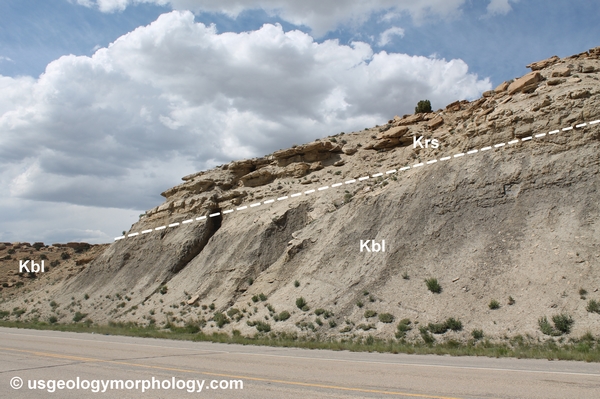Rock Springs Uplift and Adjacent Areas (cont.)
4 Rock Springs Uplift (cont.)
4.2 Rock Springs Uplift Lower Units:
Baxter Shale, Blair Formation
The Cretaceous Baxter shale, the oldest rock exposed at the surface of the Rock Springs uplift, outcrops in the Baxter basin, in the center of the uplift; divided by the Bitter Creek into a northern and a southern part, the basin is flat, except where it has been subjected to fluvial erosion. The Baxter shale, also Cretaceous, but younger, consists of soft sandy shale and somewhat harder shaly sandstone. It is a very thick unit (ca. 1300 m), the upper part of which has been removed by erosion. The Blair formation is made of shale interbedded with thin layers of sandstone, which renders it more resistant to erosion. It forms gentle hills above the Baxter shale. The much harder Rock Springs formation (mostly sandstone) makes the steep cliffs above the Blair formation.

Figure 4-6. Baxter shale in Baxter basin.
View to the east. Baxter basin is pretty flat, where it has not been dissected by fluvial erosion. Kba-Baxter shale, Kbl-Blair formation.

Figure 4-7. South Baxter basin
Gully in the valley of a small subsidiary of Bitter Creek. View to the northwest. Baxter shale forms the flat surface of the basin. Low hills in the background are carved in Blair formation. Cliffs in the background belong to the Rock Springs formation; the Killpecker Creek valley and Rock Springs are behind them. Qal-Quaternary alluvial deposits, Kba-Baxter shale, Kbl-Blair formation, Krs-Rock Springs formation.

Figure 4-8. Gullied Baxter Shale
Eroded Baxter shale on the southern flank of Bitter Creek.

Figure 4-9. North Baxter basin, Wyoming
View to the northeast. North Baxter basin (Kba-Baxter shale) is in the center. In the foreground, cliffs cut in the Rock Springs formation (Krs) above gentler slopes in the Blair formation (Kbl). The eastern flank of Baxter basin is in the background (Kbl and at the top, Krs).

Figure 4-10. Contact between the Blair and Rock Springs formations in the South Baxter basin, Wyoming
View to the south in the western half of the Rock Springs uplift, southwest of Rock Springs. A roadcut nicely exposes the contact between the Rock Springs formation (Krs), which disappears completely at left, and the Blair formation (Kbl). Although it is not evident in the photo, the strata slightly dip to the west (to the right), which explains the end of the Rock Springs formation, because of erosion. The center of the uplift (South Baxter basin) is towards the left (east).
